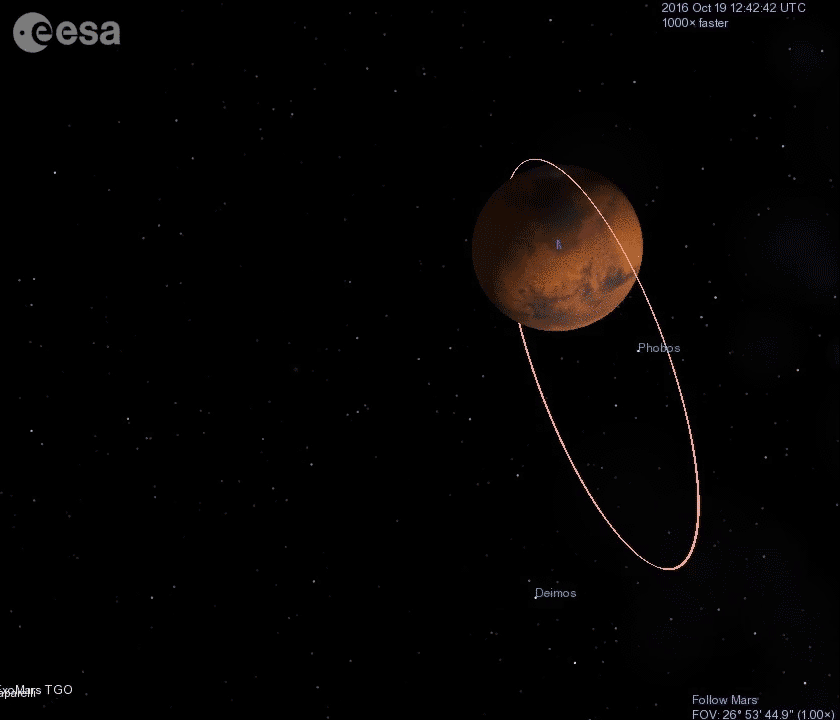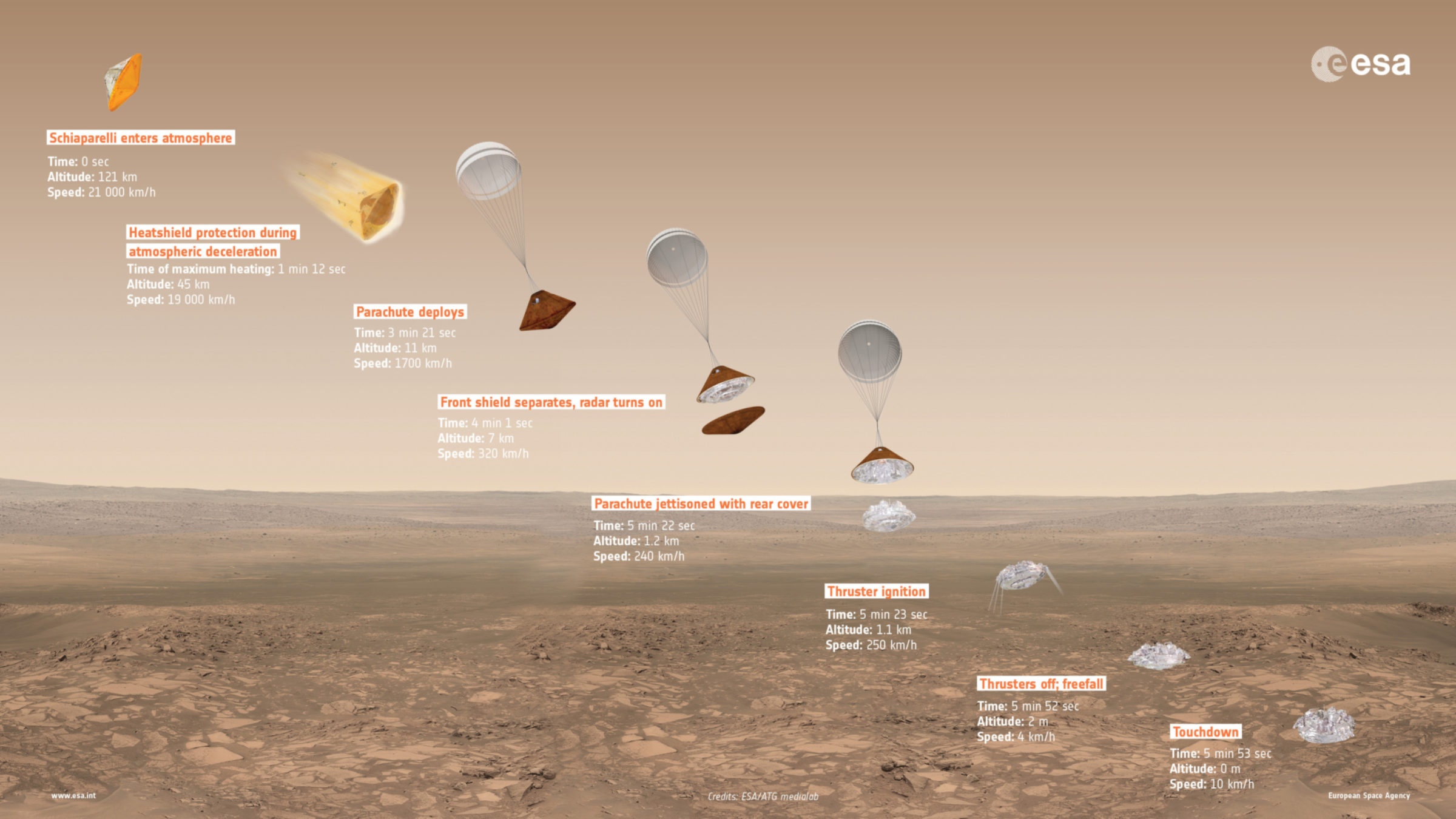Emily Lakdawalla • Oct 11, 2016
ExoMars arrives soon!
It's a busy time for space exploration: in the span of six weeks, we've had a new planetary mission launch (OSIRIS-REx), a long-lived mission come to an end (Rosetta), and now, a mission arriving at its interplanetary destination. ESA's ExoMars will arrive at Mars on Wednesday, October 19. The landing will be happening during the joint meeting of the European Planetary Science Congress and the Division for Planetary Sciences of the American Astronomical Society, so I'll be with a lot of excited space scientists in Pasadena to watch the show. The landing happens at 07:48 PDT / 10:48 EDT / 14:48 UTC / 16:48 CEST and the ExoMars Trace Gas Orbiter is expected to complete its 134-minute orbit insertion burn at about 08:23 PDT / 11:23 EDT / 15:23 UTC / 17:23 CEST. You can watch it all via livestream at http://esa.int.
ESA released a couple of cool videos today showing the geometry of the two spacecraft's arrival. The action will begin this Sunday, October 16, at 07:42 PDT / 10:42 EDT / 14:42 UTC / 16:43 CEST, when Schiaparelli will separate from the orbiter. They'll continue on nearly parallel tracks, with the orbiter making a slight diversion burn in order to target a spot just past Mars rather than onto Mars, like the lander. On orbit insertion day, here's how things will play out, with a third spacecraft, Mars Express, flying overhead to record Schiaparelli's transmissions for later playback.

For fun, here's another video, the view from Mars Express.
And finally, here's the landing video.
Schiaparelli’s descent to Mars Vizualisation of the ExoMars Schiaparelli module entering and descending through the martian atmosphere to land on Mars. Schiaparelli will enter the atmosphere at about 21,000 kilometers per hour. In less than six minutes it will use a heatshield, a parachute and thrusters to slow its descent before touching down in the Meridiani Planum region close to the equator, absorbing the final contact with a crushable structure. The animation has been sped up. For an overview of the key timings and altitudes corresponding to the events portrayed in this animation, see the Schiaparelli descent sequence graphic.Video: ESA
And a summary of the events to be expected during the landing.

Schiaparelli is classified as an entry demonstration module, meaning that it is designed to test technologies for use in future missions. It does have a limited surface meteorology package, which doesn't include a camera. There is one camera on Schiaparelli, DECA (Descent Camera), the flight spare of the Visual Monitoring Camera that flew on Herschel. It has a wide, 60-degree field of view and will take a total of 15 images at 1.5-second intervals after the heat shield has popped off the lander, helping the team localize the landing site.
Because I see people asking this a lot: Mars Reconnaissance Orbiter will not be attempting to photograph Schiaparelli's arrival. Opportunity might, but whether it even tries depends on a lot of unpredictable factors, and it's not considered too likely to succeed, even if the single bright pixel it might possibly see happens to be above Opportunity's horizon that day. But nothing ventured, nothing gained!
Best of luck to ESA and the ExoMars team for a safe arrival next week!
Support our core enterprises
Your support powers our mission to explore worlds, find life, and defend Earth. You make all the difference when you make a gift. Give today!
Donate

 Explore Worlds
Explore Worlds Find Life
Find Life Defend Earth
Defend Earth

